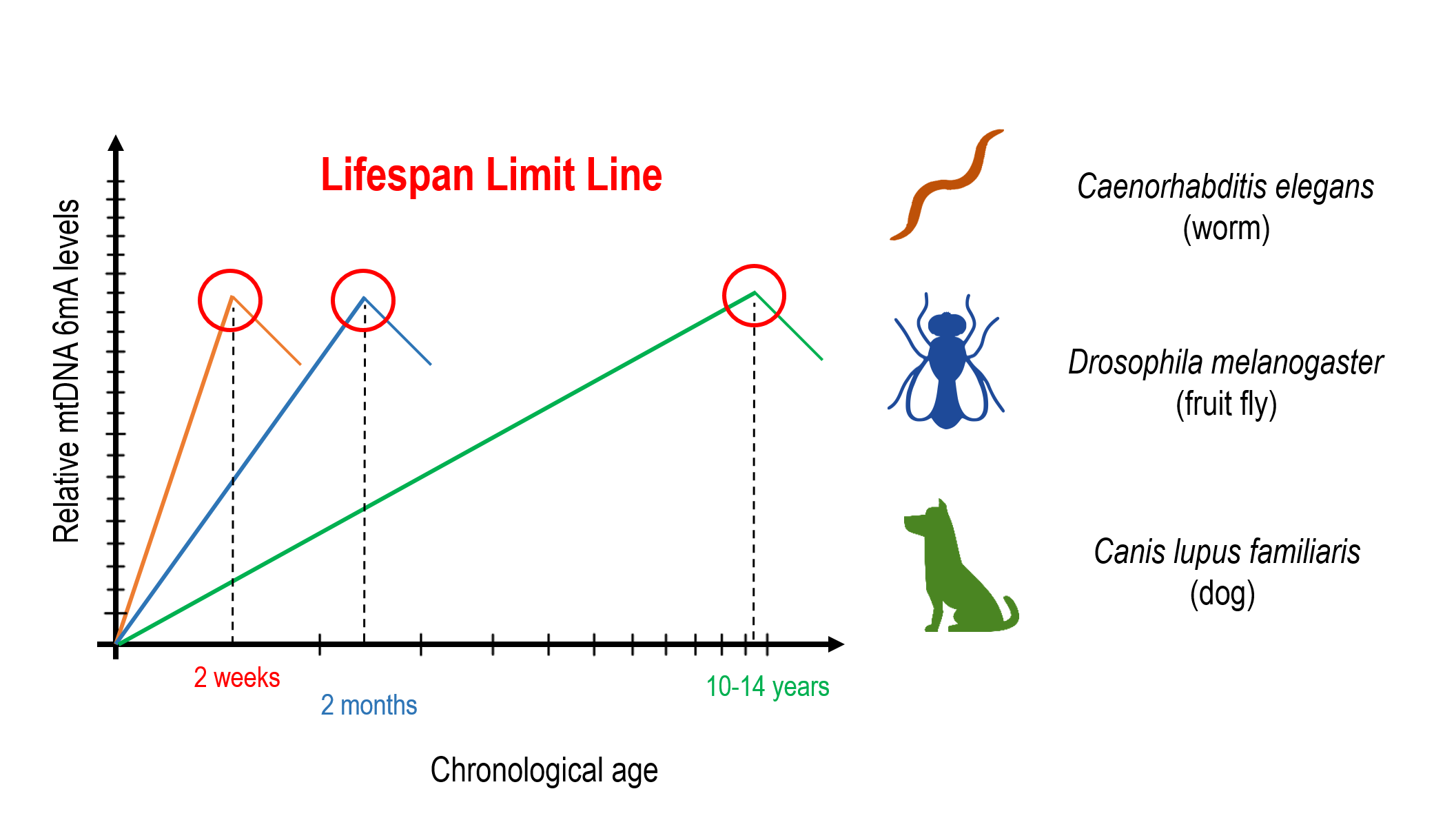Discovery of a hidden epigenetic clock in mitochondria reveals a 'Lifespan Limit Line'

Building on their pioneering work on epigenetics of aging and transposable elements, researchers Dr. Ádám Sturm and Dr. Tibor Vellai from Eötvös Loránd University, have made another significant breakthrough in understanding the molecular mechanisms of aging. Their latest study, published in International Journal of Molecular Sciences, reveals a novel epigenetic mechanism in mitochondrial DNA (mtDNA) that could revolutionize our approach to aging research and diagnostics.
In their previous landmark articles, "The mechanism of aging: primary role of transposable elements in genome disintegration" (2015) and "Downregulation of transposable elements extends lifespan in Caenorhabditis elegans" (2023), Dr. Sturm and Dr. Vellai established the crucial role of transposable elements in the aging process. Their current research expands on this foundation, uncovering a new layer of complexity in cellular aging.
The research team has discovered that a previously hidden DNA modification, N6-methyladenine (6mA), that progressively accumulates in mtDNA as organisms age. This phenomenon was observed across diverse species, including the nematode Caenorhabditis elegans, the fruit fly Drosophila melanogaster, and dogs, suggesting an evolutionary conserved mechanism in the aging process across all animal species.
"We've discovered what could be described as a 'mitochondrial epigenetic clock,'" explains Dr. Sturm. "This clock ticks at different rates depending on the lifespan of the organism, providing a new perspective on how aging is regulated at the cellular level. It's fascinating to see how this connects to our earlier work on transposable elements and genome stability."

Discovery of a Lifespan Limit Line across species. The figure illustrates a surprising finding of a "Lifespan Limit Line"—a point where an epigenetic marker in mitochondrial DNA reaches a peak before declining, signaling the rapid onset of the aging process with severe health deteriorations. (Picture by DBS)
To resolve earlier disputes about the existence of the hidden 6mA modification mark in animal genomes, the team developed a novel, reliable PCR-based method for detecting these modifications. This technique allows for accurate, sequence-specific measurement of 6mA levels in mtDNA, overcoming limitations of previous methods.
A key finding of the study was that long-lived C. elegans mutants, which live twice as long as wild-type worms, accumulate 6mA at half the rate of their normal counterparts. This observation strongly links the rate of 6mA accumulation to the aging process and lifespan regulation, reminiscent of the team's earlier findings on transposable element activity and longevity.
The research also elucidated the enzymatic pathways responsible for adding and removing 6mA modifications in mtDNA. Surprisingly, these appear to be the same enzymes involved in nuclear DNA methylation, suggesting a coordinated epigenetic regulation across different cellular compartments.
Dr. Vellai emphasizes the potential implications of this discovery: "Our findings open up new avenues for understanding and potentially intervening in the aging process. This epigenetic clock in mtDNA could serve as a more accessible and cost-effective way to measure biological age, compared to existing methods. When combined with our previous insights on transposable elements, we're gaining a more comprehensive picture of the aging process."
The study paves the way for future research on how environmental factors, lifestyle choices, and potential interventions might influence the rate of 6mA accumulation in mtDNA and transposable element activity. Understanding these epigenetic changes could lead to novel strategies for promoting healthier aging and potentially extend healthspan.
More information: Sturm Ádám, et al. N6-Methyladenine Progressively Accumulates in Mitochondrial DNA during Aging. Int J Mol Sci. 2023 Oct 3;24(19):14858. doi: 10.3390/ijms241914858. PMID: 37834309; PMCID: PMC10573865.

